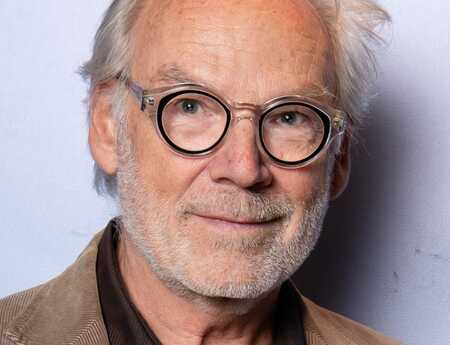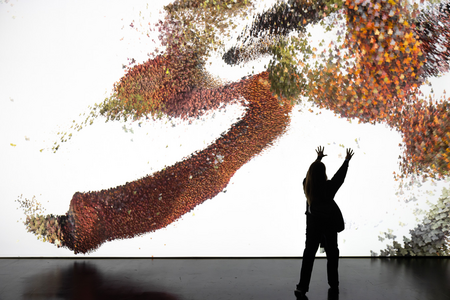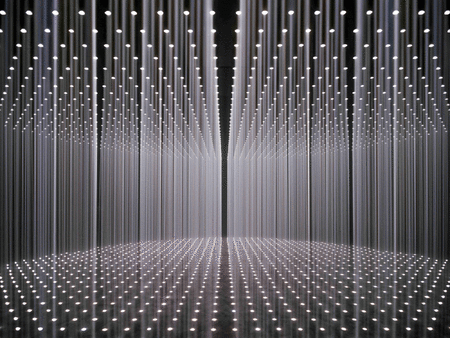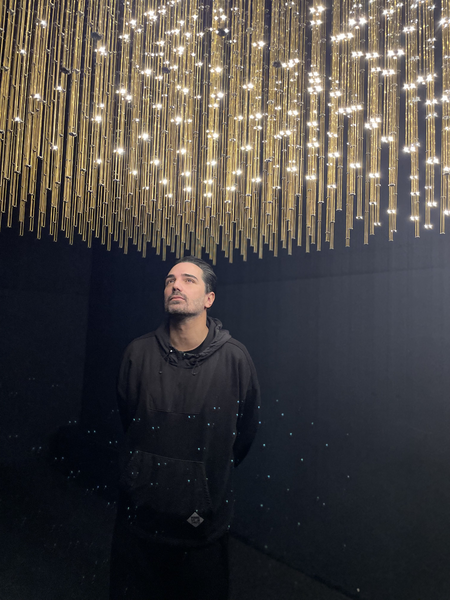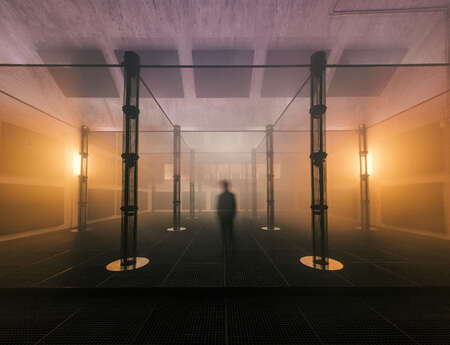Life in a Different Resolution/ Random International
Curator Bogomir Doringer brings an overview of twenty years of work from the art group Random International in NXT Museum Amsterdam. According to Doringer, ‘The digital works of the group are creative, collective dances between the audience and technology; they create fascinating stories in our minds about what it means to be human.’
In the overview are six large-scale works, including the mesmerising ‘Living Room’ installation that was shown during Miami Art Week in December 2022. Prepare your senses to be stimulated to a large extent. The exhibition shows that Random International is capable of shaping modern technology in a sublime and attractive way in order to adjust it for their digital art works.
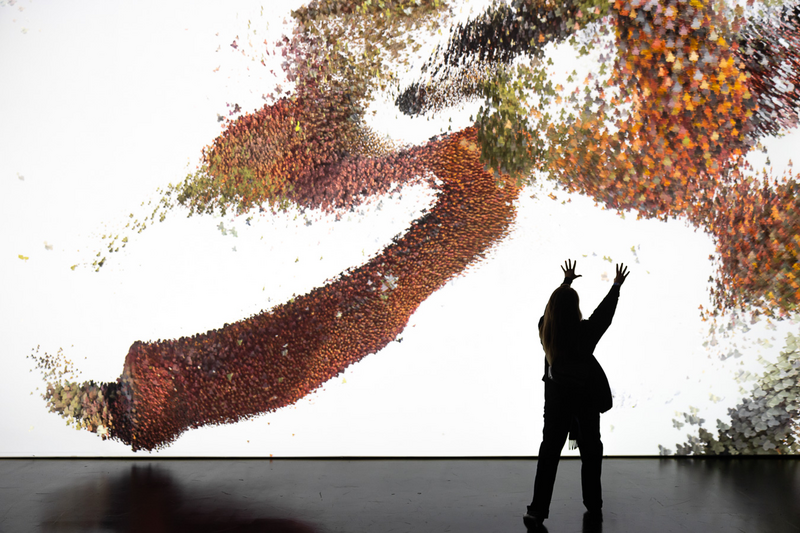
Established in 2005, Random International is a post-digital art group exploring the impact of technological development on the human condition. Best known for their large-scale interactive installations, the group works across an array of media, including sculpture, light, kinetics, video, print, robotics, and sound. International operating curator and artist Bogomir Doringer (Serbia, 1983) who is based in Amsterdam, guided me through the exhibition at the NXT Museum and answered some of my questions.
First, a private question: Why did you come to the Netherlands in the first place?
“I came here in 2004 to study at the audiovisual department of the Rietveld Academy because of my interest in the interrelation between body and technology. The study was dealing with artistic research and was also content-related. In Serbia, I studied sociology before I came to the Netherlands.”
Random International
Why did you choose Random International for this exhibition?
“It’s the third exhibition in a series, and we wanted to do a solo this time.
Random International’s work is quite relevant at the moment in terms of actual developments between machine and humans. They also have a history of about twenty years of work. Their main question is: Can technology help us humans to understand who we are?”
Are there just artists on the team of Random International?
‘’No, there is also Heloise Reynolds, a dramaturg, and there are some researchers and scientists. Led by founders Hannes Koch (b.1975, Germany) and Florian Ortkrass (b.1975, Germany), the group has a studio in London and comprises a global team of complementary talent. In 2010, they started dinner events under the title Life in a Different Resolution in the form of a mini symposium. For these dinners, they invited special guests and discussed topics like: ‘Should we embrace contemporary technological developments, and shouldn’t we try to understand why they were created? How do we humans tend to choose things, and are we getting manipulated by technology? Other topics were evolution, human behavior, robotics, artificial intelligence, etc. “
Music accompanying interactive installations
There is not only a lot of technology in this exhibition but also some breathtaking sounds and music?
“Yes, in the installations, you can sometimes hear soundscapes and music compositions. There is also a singing choir involved and some instruments. The music that is used includes ready compositions by Japanese composers Masahiro Hiramoto and Chihei Hatekayama, and commissioned compositions by Signe Lykke, Sounddesign by Mamiko Motto. Lykke made a beautiful composition with wind instruments for the installation Living Room.”
As we step into the Living Room, we hear some ambient sounds, and the space itself adjusts its pathways through lights and fog. A little bit further, we enter another room, in it the installation Swarm Study XIII. It is clearly inspired by self-organizing groups in nature, like swarms of birds or fish. The installation reacts to the movements of the visitor, which can cause beautifully shaped new patterns of swarms.”
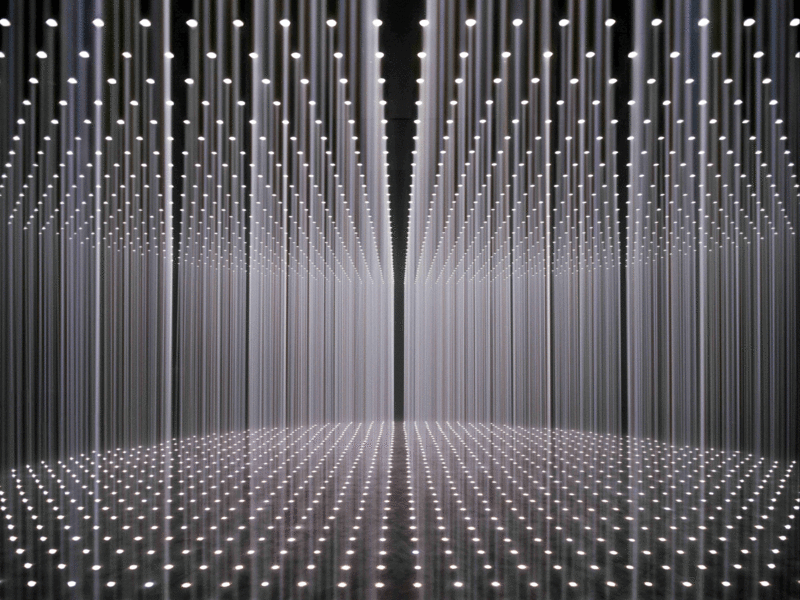
Why swarms?
“Most technologies that we now use were first developed for military purposes: face detection, surveillance, infrared cameras, drones. So, to understand swarms in nature, military technology was first. For this installation, studies from swarms, originally developed for military purposes, are used. The technology is also used in the multiple flying of drones in choreography like Studio Drift has developed. In China, it’s normal to deliver information through drones in the air.”
There is in this exhibition a second interactive installation called Life in Our Minds: Motherflock, what is it about?
“This newly created work is a virtual flock of paper-like ‘bird-oid’ objects. It is an exploration of digital collectibles through Blockchain technology. Random International created a mother flock of digital flying objects; when you come close to it you can interrupt it, support it, and break it into two. It is a highly interactive sculpture immersing the visitor within the flock: the sculpture casts a digital shadow, prompting a real-time response, and establishing an interplay between the digital and physical realms. It is very much about how an individual movement within a collective movement can make an impact and how the collective movement impacts the individual. The installation is accompanied by the music of Japanese composer Masahiro Hiramoto.”
What makes You, ‘You’
Another digital artwork deals with the question of what makes you, ‘you.’ It is titled Our Future Selves. Viewers are presented with the full-length reflection of their body, which is distributed as points of light in a three-dimensional way.
What makes this work so special?
“Questions that arise when you see the work: How many light particles are present in describing my figure? Is that what I see just an outer state of me? What’s interesting about Random International is that they design their own screens. They do not work with ready-made objects. They create grits, and the light inside that grit is sculpted. They are capable of shaping modern technology and adjusting it for their art works. Their work is actually quite sculptural.”
The last installation Doringer showed was called Space of possible minds. It consists of several slides that cope with new technologies and AI, which have been turned into visuals. They were produced during the famous dinners of Random International, and is situated in one of the transition rooms of Nxt Museum between the main spaces where the big installations can be seen.
How can AI be of use to us human beings?
“We know that there are different intelligences out there; there is animal and human intelligence but we also have extraterrestrial intelligence, bio machines and AI. In this space, we visualize the overlap between these intelligences, which can help us imagine the future and minimize our fear of future developments like AI. Random International is asking, ‘Can AI be a form of evolution of humankind? “
What makes the installations of Random International so special?
“First of all, they design their own screens; they do not work with ready-made objects. They create grits and the light inside that grit is sculpted. And they are capable of shaping modern technology and adjusting it for their art works: the digital artwork, Presence and Erasure produces temporary painted portraits of passersby. The artwork constantly scans faces in the room and photographs them. They last only for sixty seconds and then disappear. This installation uses surveillance technology that is often used for cameras in public spaces. This installation asks us whether the thrill of seeing ourselves masks the violation of our privacy. And that is for you to decide.”

Nxt Museum Amsterdam presents
Random International: Life in a Different Resolution
27th September 2023 – 30 June 2024
www.nxtmuseum.com

